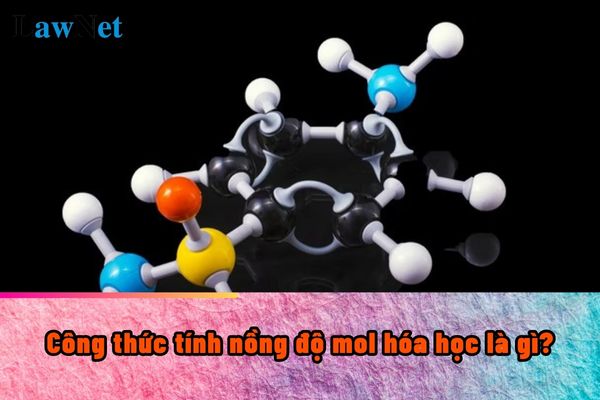What is the formula for calculating the molar concentration in chemistry? When do students in Vietnam learn the formula for calculating the molar concentration?
What is the formula for calculating the molar concentration in chemistry?
Molar concentration (symbol: CM) is a measure used to express the concentration of a solute in a solution. It indicates the number of moles of solute per liter of solution.
|
CM = n/V *Where: |
Note: The information is for reference only./.

What is the formula for calculating the molar concentration in chemistry? When do students in Vietnam learn the formula for calculating the molar concentration? (Image from the Internet)
When do students in Vietnam learn the formula for calculating the molar concentration?
Based on Section IV, Appendix of the General Education Program in Natural Sciences accompanying Circular 32/2018/TT-BGDDT on specific competency requirements for the natural sciences program (including chemistry), the following requirements are specified:
- Calculate based on chemical equations
- Calculate the amount of substance in a chemical equation by molar quantity, mass, or volume under 1 bar and 25 degrees Celsius conditions.
- State the concept of reaction yield and calculate the yield of a reaction based on the amount of product obtained theoretically and the amount obtained in practice.
- Mol and gas density
- State the concept of mol (atom, molecule).
- Calculate the molar mass (M); Convert between the number of moles (n) and mass (m).
- State the concept of density ratio and write the formula to calculate the density ratio of gas.
- Compare whether one gas is heavier or lighter than another based on the density ratio formula.
- State the concept of molar volume of gas at a pressure of 1 bar and 25 degrees Celsius.
- Use the formula n(mol) = to convert between the number of moles and the volume of gas under standard conditions: pressure 1 bar at 25 degrees Celsius.
Therefore, the formula to calculate molar concentration will be taught in chemistry (Natural Sciences) in the grade 8.
What are the characteristics of grade 8 chemistry in Vietnam?
Based on Section I of the General Education Program in Chemistry accompanying Circular 32/2018/TT-BGDDT:
- Chemistry is a branch of science in the field of natural sciences, studying the composition, structure, properties, and changes of elements and compounds.
- Chemistry closely combines theory and experimentation and serves as a bridge between other natural sciences such as physics, biology, medicine, and geology. Advances in the field of chemistry are linked to developments in other scientific disciplines like biology, medicine, and physics.
- Chemistry plays an important role in life and production, contributing to economic and social development. The achievements of chemistry are applied in various fields such as materials, energy, medicine, biotechnology, agriculture, forestry, fishing, and many other areas.
- In the general education curriculum, Chemistry is a subject within the natural sciences group in high school, which students choose based on career orientation, interests, and personal capabilities. Chemistry helps students gain core knowledge of chemistry and apply this knowledge to life, while also being related to many other educational fields.
- Along with Mathematics, Physics, Biology, Informatics, and Technology, Chemistry contributes to promoting STEM education, which is a trend in education valued by many countries worldwide.
- The content of the Chemistry subject is designed into topics that ensure the strengthening of content lines, developing knowledge, and practicing skills formed from lower levels, helping students gain a deeper understanding of foundational chemistry knowledge, forming a basis for learning, working, and researching.
- Each school year, students with career orientations requiring extensive chemistry knowledge will choose three learning topics that match their personal aspirations and the organizational conditions of the school.
- These topics aim to perform deep differentiation, helping students enhance knowledge and practical skills, and apply learned knowledge and skills to solve practical issues, meeting career orientation requirements.

